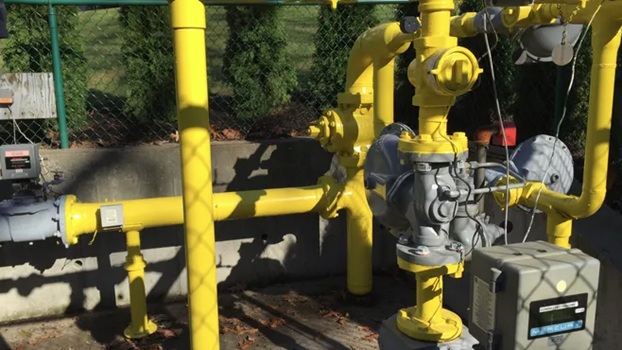New York Will Not Grow Without Natural Gas.
It's Just That Simple | Opinion
Key Points
- New York's Independent System Operator (NYISO) warns of decreasing energy reliability margins due to unmet renewable energy goals.
- Natural gas is crucial for New York, powering 60% of homes and over half of the state's electricity generation.
- Proposed gas pipelines could alleviate supply constraints but face scrutiny.
- The state must balance the need for reliable energy with its renewable energy goals.
- Ignoring current energy needs could negatively impact New York's economic growth and
public health.
Much has changed during my decades of work in the energy industry, but one thing remains constant: The need for reliability.
Reliability is as simple as making sure that the lights turn on when the switch flips, and as crucial to public health and safety as ensuring the heat or air conditioning works in the height of summer or depth of winter. Reliability also makes economic growth possible, ensures access to a digitally driven world and is the lynchpin of long-term success.
That’s what makes the recent flashing warning signs from the New York Independent System Operator, or NYISO, the non-profit running the state’s electric grid, about a thinning energy reliability margin so dire.
Renewable energy sources needed to achieve the state’s aggressive climate goals have not scaled up as needed to meet what the NYISO forecasts as a “dramatic” increase in demand. In its 2025 Power Trends report, which should serve as a wake-up call to lawmakers and regulators alike, NYISO CEO Rich Dewey called maintaining an adequate power supply “imperative” to meet growing consumer demand for electricity.
The way to do that, according to the NYISO, is to rely on fossil-fired generation until sufficient power is available from renewable generation sources. That includes potentially repowering aging plants with lower-emission generation technology as part of an all-of-the-above approach that utilizes all available energy sources.
All of this leads to a clear conclusion: Natural gas remains a critical energy resource for the foreseeable future.
New Yorkers Must Continue to Rely on Natural Gas
Currently, six in 10 New Yorkers heat their homes with natural gas; switching them all over to electric heating systems requires both extraordinary infrastructure upgrades and the ability to produce sufficient power. More than half of the state’s installed electric generation capacity comes from natural gas and so-called dual fuel (gas coupled with dirtier oil as a backup), with 86% of downstate generation reliant on those sources.

The trouble is that the gas supply itself is facing significant constraints. On the coldest days, utilities prioritize household heating needs, which lessens the supply available for equally essential electric generation. New proposed gas pipelines — the Constitution Pipeline upstate and the Northeast Supply Enhancement project downstate — will help ease these constraints and deserve a fair hearing as they move through state-level reviews.
Much has changed since these projects were first proposed and roundly debated. Last decade, necessary state permits were rejected, in part due to politics driven by idealistic theories of how New York’s energy systems should be built. The outlook for renewable generation also was rosier. But with the latest energy supply and demand data providing such a stark wake-up call, we must decide if we’re willing to jeopardize reliability — and along with it, economic growth, jobs, and public health and safety — in the years ahead by forgoing critical investments in gas.
Lapses in energy most certainly would put a damper on the economic goals set by the state, from the build-out of high-tech manufacturing megaprojects to growth in data centers necessary to position New York as a leader in artificial intelligence.
The same goes for affordable housing goals, which are running up against impending all-electric building requirements. Even by abstaining from using gas for cooking and heating, all-electric homes still clearly will require electrons generated by natural gas to power up for the foreseeable future.
The list of non-negotiables that require reliable energy grows from there. For example, even the smallest blip in power at our state’s health care facilities — whether in the operating room or on the recovery floor — would be catastrophic, particularly as the use of energy-intensive technology grows. And as extreme temperatures become the norm, so do emergency room visits, as many vulnerable New Yorkers lack access to air conditioning.
Ensuring sufficient natural gas is available by advancing new pipelines does not need to come at the expense of work to build out renewables. The much-discussed all-of-the-above approach to energy that includes wind, solar, hydro, nuclear and, yes, gas where necessary, is what we need to for a cleaner and reliable future as a state.
The alternative, ignoring the clear needs right in front of us, will quite literally put New York on a dark path forward.
Robert Catell is chairman of the board of the Advanced Energy Research and Technology Cente, or AERTC, at Stony Brook University and the National Offshore Wind Research and Development Consortium.
